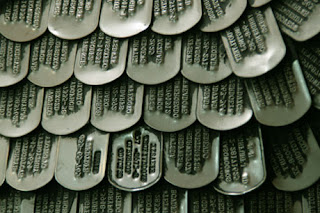The output of Korean art was disrupted a great deal by the Korean War, however the ensuing economic development lead to a burgeoning of creativity amongst young Korean artists. Many traveled to the west to study, and then returned to Korea to reconcile their deep seated traditionalism with modern innovation. These artists often speak about issues of globalization, alienation, materialization, loss or hybridization of identity, and other such modern concepts.
Here are a few contemporary artists I have learned about recently:
Gwon Osang
Gwon Osang creates life-size sculptures using photographic images. The result is both literally photo-realistic, and also a bit surreal. His creations become most human when their expressions and gestures are examined.
Choi Jeonghwa
While referencing pop culture, Choi Jeonghwa uses a variety of media, included molded plastic and inflatable sculptures. Choi's work often features mass-produced objects, commenting on South Korea's involvement as a point of origin for many disposable consumer goods.
Do-ho Suh
 |
| Karma |
Do-ho Suh's work features depictions of the literal and figurative "little people." Defying conventional understanding of scale, Suh's works frequently engage visitors and are designed with site-specificity in mind, drawing the viewer's attention to their own interaction with the pieces.
 |
| Floor |
 |
| Some/one |
 |
| Some/one (detail) |








































